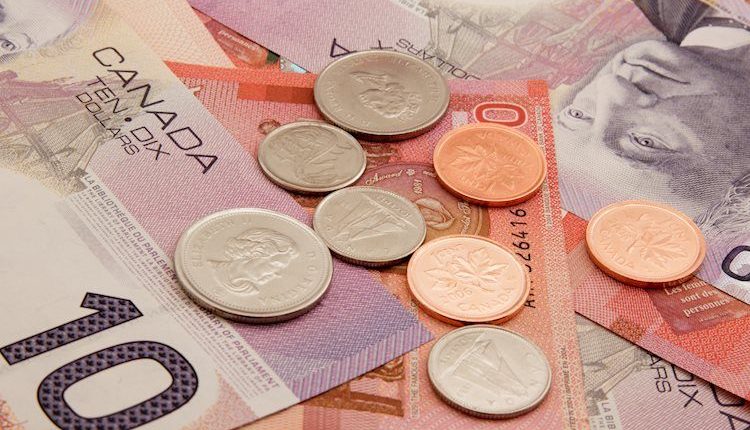- The Canadian Dollar is slumping against the US Dollar as markets scatter after a US CPI data beat.
- An uptick in US consumer prices is sending US Treasury yields higher as investors fear further Fed rate hikes.
- The Canadian Dollar finds little support in the inflation rush into safer assets.
The Canadian Dollar (CAD) has tumbled against the US Dollar (USD) on Thursday following a bumper reading for the US Consumer Price Index (CPI) inflation, sending the USD/CAD pair into 1.3670 as the DXY US Dollar Index soars in the US market session.
Economic data for Canada remains thin on the calendar, with nothing else in the pipe for the rest of the week.
Annual US CPI held steady in September, while investors were hoping for another tick lower.
With US inflation holding higher for longer than investors had expected, concerns that the Federal Reserve (Fed) could push further rate hikes down the chute are sending traders scattering into the safe haven of the USD, taking the broader market lower and sending the CAD into the week’s lows.
Daily Digest Market Movers: Canadian Dollar slumps in US CPI inflation flight
- US CPI inflation snubbed market expectations of further price cooling.
- US CPI inflation increased 0.4% for September on month, less than the 0.6% but above the market’s expected 0.3%.
- The annual figure into September also beat expectations, printing steady at 3.7% against the forecast of 3.6%.
- US Initial Jobless Claims also held steady at the previous week revised 209K versus the forecast 210K.
- Canadian data is absent from the rest of the week’s economic calendar after Wednesday’s Building Permits showed a surprise uptick to 3.4% against the anticipated 0.5% and the previous decline of 3.8%.
- Crude Oil prices are struggling to develop firm bids after US CPI data, further draining support for the Loonie.
- WTI Crude Oil rose towards $84.00 before falling back into the day’s midrange near $82.50 after US inflation figures sent the market into a tailspin.
Technical Analysis: Canadian Dollar slumps as investors pile into US Dollar, USD/CAD clears 1.3650
The USD/CAD pair is up 0.65% on Thursday into 1.3660, with the day’s high sitting close by at 1.3668, just north of the 200-hour Simple Moving Average (SMA).
The USD/CAD started Thursday with an early low at 1.3571, and the pair springboarded off near-term support from the 1.3580 level.
On the daily candlesticks, an extension of the USD’s bullish bounce will see the USD/CAD build out a push back into the month’s highs near 1.3775, with technical support propping up prices from the 50-day SMA currently rising into 1.3550.
Canadian Dollar FAQs
The key factors driving the Canadian Dollar (CAD) are the level of interest rates set by the Bank of Canada (BoC), the price of Oil, Canada’s largest export, the health of its economy, inflation and the Trade Balance, which is the difference between the value of Canada’s exports versus its imports. Other factors include market sentiment – whether investors are taking on more risky assets (risk-on) or seeking safe-havens (risk-off) – with risk-on being CAD-positive. As its largest trading partner, the health of the US economy is also a key factor influencing the Canadian Dollar.
The Bank of Canada (BoC) has a significant influence on the Canadian Dollar by setting the level of interest rates that banks can lend to one another. This influences the level of interest rates for everyone. The main goal of the BoC is to maintain inflation at 1-3% by adjusting interest rates up or down. Relatively higher interest rates tend to be positive for the CAD. The Bank of Canada can also use quantitative easing and tightening to influence credit conditions, with the former CAD-negative and the latter CAD-positive.
The price of Oil is a key factor impacting the value of the Canadian Dollar. Petroleum is Canada’s biggest export, so Oil price tends to have an immediate impact on the CAD value. Generally, if Oil price rises CAD also goes up, as aggregate demand for the currency increases. The opposite is the case if the price of Oil falls. Higher Oil prices also tend to result in a greater likelihood of a positive Trade Balance, which is also supportive of the CAD.
While inflation had always traditionally been thought of as a negative factor for a currency since it lowers the value of money, the opposite has actually been the case in modern times with the relaxation of cross-border capital controls. Higher inflation tends to lead central banks to put up interest rates which attracts more capital inflows from global investors seeking a lucrative place to keep their money. This increases demand for the local currency, which in Canada’s case is the Canadian Dollar.
Macroeconomic data releases gauge the health of the economy and can have an impact on the Canadian Dollar. Indicators such as GDP, Manufacturing and Services PMIs, employment, and consumer sentiment surveys can all influence the direction of the CAD. A strong economy is good for the Canadian Dollar. Not only does it attract more foreign investment but it may encourage the Bank of Canada to put up interest rates, leading to a stronger currency. If economic data is weak, however, the CAD is likely to fall.
Read the full article here

